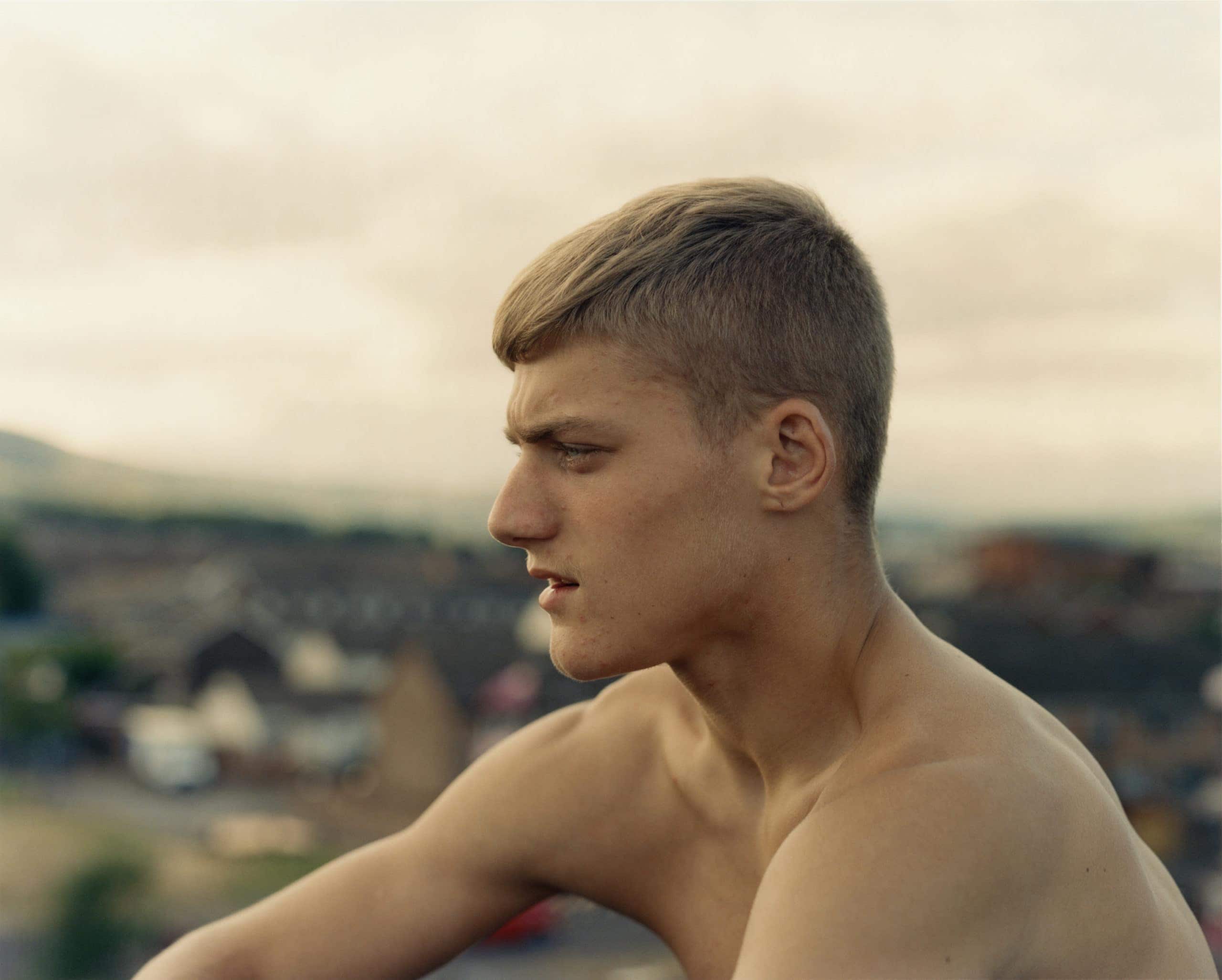
Tell me about the series ‘Love’s Fire Song’…
Belfast is a city segregated and divided. Its so-called ‘peace walls’, built to separate Unionist and Nationalist communities, are taller in places even than the Berlin Wall. For this current project Love’s Fire Song, I photographed youth culture on either side of the peace walls, choosing the symbolic bonfires of the 12th July and 8th August as the starting point. Rather than the expected images, laden with political and religious imagery, I concentrated on the ordinary, the everyday.
The photographs are shown as a coherent series, using a muted colour palette with only subtle symbolisms, and without reference to the specific locations they were taken. Free from political and geographical context, the photographs speak of longing, yearning, aspirations and vulnerabilities of young people in Belfast today; their myriad joys and sorrows; lingering on the moments that can resonate with us all, independent of our individual backgrounds and inherited place and beliefs.
What is your artistic process?
One of my favourite things through the process of working in the photographic medium, is entering worlds and people’s lives you never dreamt of knowing. Boundaries are crossed, friendships are made, and work is created. It is a beautiful gift and one of the most amazing things about working with photography.
You choose a world you would like to explore, a world where you have no experience, no connections, and in some cases you may not be welcomed nor wanted. But with the camera, those worlds often open up, stories form, emotive moments are shared and experienced, all through the gift the medium of photography has given you. Bruce Davidson summed this experience in his quote, ‘I start off as an outsider, usually photographing other outsiders, then at some point, l step over a line and become an insider’.
Who and what inspired you to become a photographer?
I became fascinated by photography as a child after watching my schoolteacher mother taking annual First Communion portraits of pupils in the small village Shillelagh, County Wicklow, with a twin-lens reflex camera. I never got to take pictures with her camera, but I was often holding it, looking through the reversed picture frame, and losing myself with imagined images.
As a shy and quiet young teenager, I was more of an observer and listener. I got my first camera for Christmas aged 12 – a small Kodak pocket camera. Looking back to that time that camera became my vehicle for quietly engaging with the people and environments that surrounded me. It helped me to form meaning with the world through feeling the wonder and total beauty of the everyday through the concentration of looking through the camera’s viewfinder.
The changing light and seasons, the movement of people as they walked down a street, the subtle shifts and nuances in a person’s expression as they sat quietly in a space as time passed by. Photography enabled me to explore and express quiet subtleties, emotive connecting qualities, stories and narratives we all share in the everyday through pictures rather than words.
What does being a photographer represent to you?
One of the reasons l make pictures is because there is a rich and varied emotional depth to everyone’s life no matter how ordinary, a life just as beautiful and dramatic as everybody else’s. All the joy, stillness, subtleties of emotion and sadness in the everyday which links us all is what l am honing in on.
People like to be acknowledged, they want to have an identity and presence in a world where they maybe feel they are not seen nor heard. The emotional narrative of everyone’s life is interesting, and that is what l am drawn to.
Can you tell me about the ‘Taylor Wessing Photographic Portrait Prize’ – what does the prize winning photo ‘Neil’ mean to you?
To make this Taylor Wessing portrait, I was lifted atop a bonfire twenty five metres high, by a cherry picker that Neil and his friends had used to construct the pyre from wooden pallets. This was a magical moment, high in the sky with a breeze blowing, no judgement. Neil looking out across Belfast, looking forward to his life yet to unfold.
This one portrait embodies all the hopes and intentions l had for Love’s Fire Song when I set out on my first day of working on the project, the portrait is a celebration of the good people of Belfast from either side of the peace wall.
The project is dedicated to John Hume, architect of the Good Friday Agreement, a Nobel Peace Prize Winner, and human rights activist. His quote ‘Difference is the essence of humanity’ encapsulates all of the subtle layers within the portrait of Neil and all of the Love’s Fire Song portraits.
Love’s Fire Song is now on exhibition for the first time at Dortmund U, Museum Osteall, Dortmund, and will run until March 17th. It will be shown at the Gallery of Photography Dublin from June 2020.




